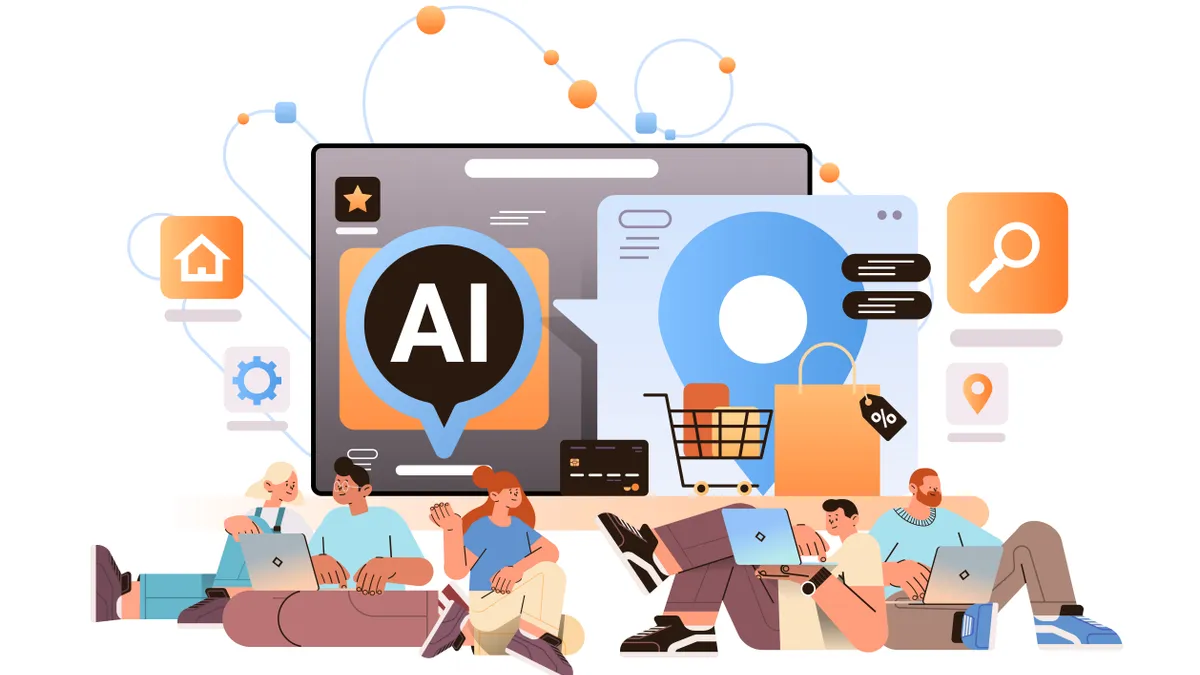AI is changing every industry, so it’s no surprise it has the power to completely reshape the retail world for both business owners and shoppers. From streamlining everyday tasks to tracking inventory, polling employee sentiment and better serving customers, AI tools are empowering retail businesses of all sizes to work smarter while using fewer resources.
According to the latest research by the Workforce Lab from Slack, a Salesforce company, desk workers are spending 41% of their time on tasks that are “low value, repetitive or lack meaningful contribution to their core job functions.” This reveals a clear opportunity for AI and automation tools to help them refocus their energy away from the “work of work” and toward more high-value activities. Indeed, the use of AI tools in the workplace rose 24% in the last quarter, and of those using AI, 80% say it’s already improving their productivity.
While many businesses are excited to save time and money by incorporating AI, just as many are flying blind as to how to adopt it. We’ve created a quick-start guide to provide you with some practical advice on how you can seamlessly incorporate AI and similar automation tools into your workplace—for both your employees and your customers.
Explore areas for improvement, both internally and externally
AI’s impact on retail is potentially limitless, but it’s a good idea to start small. Consider where you and your team can streamline or even eliminate time-consuming daily tasks, like logging data or attending redundant stand-up meetings.
To really zero in on how best you can implement AI, begin with those who will be impacted the most. Ask relevant teams where and how you can enhance their daily work lives, and give them examples, like “Would it be helpful if we simplified inventory management?” or “Do you think we can uncomplicate the ordering process?” Things like invoicing, shipment tracking, forecasting and project management can all be improved by AI, but if it won’t impact your teams, it’s not going to make a difference. (You could even use AI to gather your employees’ thoughts on AI: Add a Simple Poll asking a few simple questions to any Slack channel or conversation.)
Once you’ve considered internal upgrades, shift your focus to the customer’s experience. Here, you can use AI to deliver faster issue resolutions, gain visibility into order status and onboard more seamlessly. AI could touch and optimize practically every stage of the buyer’s journey, from personalizing product recommendations to anticipating customer needs, tracking conversation history for improved engagement, and analyzing data to prevent churn.
This all sounds well and good, but what are some tangible examples for how best to go about implementing AI into your everyday workstreams?
Tap into the power of automation without a single line of code
Slack’s no-code Workflow Builder offers endless options for how to use automation to save you and your team time and effort. Simply put, a workflow is a sequence of custom steps and actions connected to a Slack channel. This automation tool empowers everyone to automate work in Slack: Nearly 2 billion workflows have been built without a single line of code (and 80% of those building the workflows come from non-technical backgrounds).
Let’s take the task of wrangling simple requests for product information or customization services, which likely involves some back-and-forth communication before the real work begins. With a request workflow in Slack, you can attach intake forms to a channel and standardize how teammates ask for help or share feedback. No more follow-ups like, “Is there a brief?” or “Do you have a budget for this?” If it’s in the form, your peers will know what’s required to move a request forward. Completed forms are automatically posted in a channel, where a quick emoji lets the team know who’s looking at the submission. Any further conversation can be coordinated in a tidy thread.
Another great opportunity for AI lies in the onboarding challenge of getting people up to speed when they join projects, change teams or start as new employees. In the past, you’d have to take the time to track down documents and ask specific questions to identify the project leaders and provide relevant context. For maximum efficiency, you can now tap into both automation and engagement.
For instance, with Slack’s Workflow Builder, whenever people join a channel, they can automatically be sent the resources they need to get caught up, without wasting time asking others. Additionally, you can prompt new employees to fill out a form with other information, such as a short personal bio. The completed form can be posted into a designated welcome channel, where everyone can get to know them.
Save time and scale faster
In the retail industry, moving quickly is paramount to success. To supercharge productivity and drive your business forward, generative AI helps securely distill collected data—like the collective knowledge that lies in your Slack channels.
For example, let’s say one of your employees is navigating a time-sensitive contract renewal with a vendor, which will likely involve meticulous reviews of lengthy documents and countless questions between colleagues. To bypass this toil, they could use the new Slack AI search answers feature to ask, “What’s the latest on the contract?” and get the information they needed instantly, without having to rely on others.
Or perhaps a teammate is returning from time off. Instead of rifling through countless threads, emails and meeting notes, AI can quickly summarize what was missed. For example, you could tap into Slack AI’s conversation summaries, which generate key highlights from your channels and threads in one click. Rather than spending a few days catching up, you can dive back in and pick up right where you left off.
Make the transition to AI easy for your business
By starting small, identifying opportunities and then empowering your employees with easy-to-use, no-code tools, like Slack’s Workflow Builder, you and your teams can dive into the world of automation with confidence. And once you start implementing AI into your workflows and processes, you’ll see what a difference it can make for you, your employees and your customers.










